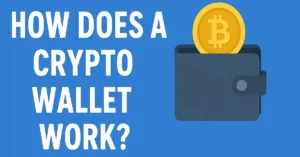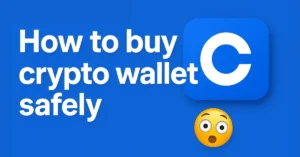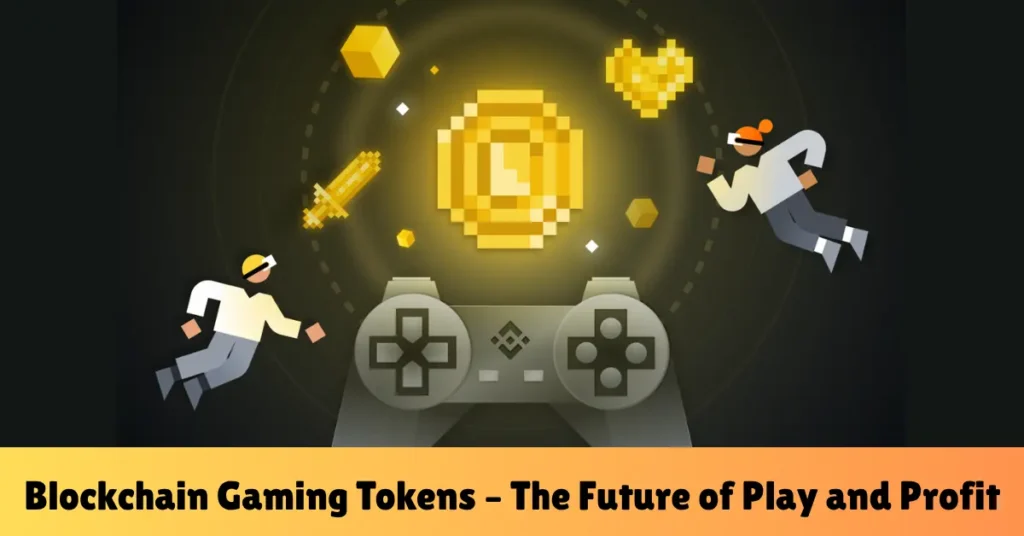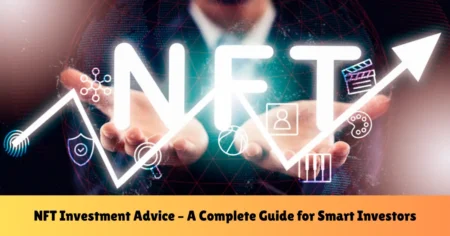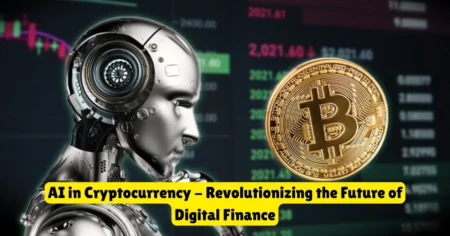How to Get Started with Blockchain Gaming Tokens
Scalability and Network Congestion
Scalability remains one of the most pressing issues in blockchain gaming. When a popular blockchain game draws hundreds of thousands of users, it can strain the underlying blockchain network. This often results in slow transaction speeds, high gas fees, and poor user experience—especially on networks like Ethereum that have historically struggled with congestion.
Blockchain games rely on real-time or near-instantaneous interactions. Any latency can be a deal-breaker for players used to fast-paced environments. Some blockchain networks, like Solana and Polygon, have emerged as alternatives because they offer higher throughput and lower transaction costs. Still, even these platforms are not immune to scalability problems during peak usage.
One solution lies in Layer 2 scaling solutions, which offload transactions from the main chain to reduce the burden. These include platforms like Optimism and Arbitrum for Ethereum. As more developers adopt these solutions, players can expect smoother gameplay and cheaper transaction fees. However, transitioning to these solutions adds another layer of complexity for both developers and users, which could slow down mass adoption.
Regulatory Uncertainty Around Crypto Tokens
Blockchain gaming tokens, like all cryptocurrencies, operate in a murky regulatory environment. Some countries view gaming tokens as assets or securities, leading to potential restrictions or outright bans. For example, if a game’s token offers passive income or profit expectations, regulators may classify it as a security, triggering additional compliance requirements.
This uncertainty deters institutional investment in blockchain gaming projects and creates risks for developers and players alike. Players could wake up to news that their country has restricted crypto access or that the game’s economy has been halted due to legal actions.
To mitigate this, gaming platforms are starting to build regulatory-friendly models by introducing KYC/AML procedures and working with legal advisors to ensure token compliance. However, these measures can reduce user anonymity and contradict the decentralized ethos of blockchain technology.
Ultimately, the future of blockchain gaming will hinge on how global regulatory bodies decide to approach crypto assets—and how well the industry adapts to those changes.
Risk of Scams and Poor-Quality Projects
Not all blockchain gaming tokens are created with good intentions. The industry has seen a wave of low-quality, scammy, or “rug pull” projects that promise big returns but fail to deliver any real gameplay or utility. Some of these projects exist only to pump a token’s price temporarily before disappearing with investors’ funds.
This creates a trust issue within the community. New players and investors often find it hard to distinguish between legitimate, well-built games and cash-grab schemes. Without proper vetting, people risk losing not just money but also interest in the entire concept of blockchain gaming.
A key strategy to avoid scams is due diligence. Always investigate the project’s development team, roadmap, partnerships, and community engagement. Reputable platforms are transparent about their processes, keep their promises, and foster genuine engagement across their user base.
Platforms like DappRadar and CoinGecko provide insights into token volume, user statistics, and project legitimacy, serving as valuable tools for cautious gamers and investors. Over time, better industry standards and third-party audits can help eliminate fraudulent behavior—but for now, vigilance is the best defense.
How to Get Started with Blockchain Gaming Tokens
Choosing the Right Game Platform
Your journey into blockchain gaming starts with picking a platform that matches your interests. Are you into card games, RPGs, open-world builders, or strategy games? Blockchain gaming offers it all. Popular platforms like Axie Infinity, The Sandbox, Gods Unchained, and Decentraland cater to different genres and player preferences.
When evaluating a platform, consider:
- The team’s credibility
- Community engagement
- Active user base
- Game mechanics and token utility
- Marketplace for NFTs or tokens
You should also look at the long-term roadmap. Is the project consistently releasing updates? Is there a clear vision for future development? These signs indicate whether the game is likely to survive and grow or fizzle out.
Setting Up a Crypto Wallet for Gaming
Before you can interact with most blockchain games, you’ll need a crypto wallet. This wallet stores your tokens and NFTs and allows you to sign transactions within the game. The most commonly used wallet is MetaMask, which supports Ethereum and other compatible networks like Polygon and Binance Smart Chain.
Here’s a simple step-by-step guide:
- Download and install MetaMask as a browser extension or mobile app.
- Create a wallet and secure your recovery phrase.
- Fund your wallet with ETH (or other supported tokens).
- Connect your wallet to the gaming platform of your choice.
Some games also integrate with other wallets like Trust Wallet or WalletConnect. Always verify which wallet is supported before you get started.
Buying and Earning Gaming Tokens
Once your wallet is ready, you can buy gaming tokens directly from cryptocurrency exchanges like Binance, Coinbase, or KuCoin, depending on availability. Always use trusted exchanges and double-check contract addresses when purchasing tokens to avoid scams.
Many games also allow you to earn tokens by playing. This is the core of the play-to-earn (P2E) model. You may earn tokens by:
- Winning battles
- Completing daily quests
- Participating in tournaments
- Renting out NFTs
- Breeding characters or trading assets
In games like Axie Infinity, players used to earn SLP tokens by winning battles, while in The Sandbox, creators earn SAND tokens by building and monetizing virtual land.
Remember, the real benefit lies in the fact that these tokens have real-world value. You can sell, trade, or use them to purchase in-game assets, creating a circular economy within the gaming world.
Strategies to Maximize Profits with Blockchain Gaming Tokens
Play-to-Earn (P2E) Grinding Techniques
Play-to-earn games aren’t just about having fun—they can be a consistent source of income when approached strategically. One of the most common methods to earn in blockchain gaming is “grinding,” or consistently playing to accumulate in-game tokens and rewards.
To get the most out of grinding:
- Understand the reward mechanics: Learn how daily missions, PvP battles, or quest systems work to maximize your daily earnings.
- Use multiple accounts or scholars: In games like Axie Infinity, players create “scholarship” programs where other players use their NFTs and split the earnings.
- Optimize your team or character builds: High-level characters or powerful NFT assets often yield more rewards in PvP or campaign modes.
Consistency is key. Logging in daily, participating in seasonal events, and staying updated on patch notes can help you stay ahead of the curve. Some players earn hundreds or even thousands per month just by mastering game mechanics and exploiting economic opportunities inside the ecosystem.
Trading and Staking Tokens for Passive Income
Beyond playing, another powerful way to profit from gaming tokens is through crypto trading and staking. Many gaming tokens are listed on decentralized exchanges (DEXs) like Uniswap, PancakeSwap, and centralized platforms like Binance or Bybit. You can trade these tokens like any other cryptocurrency.
Tips for successful trading:
- Watch the market trends: Use tools like CoinMarketCap or TradingView to monitor token volatility and liquidity.
- Buy low, sell high: Identify good entry points based on game updates, roadmap milestones, or user growth.
- Don’t FOMO: Avoid jumping into pumps without proper analysis.
If you’re looking for passive income, consider staking your tokens. Many games allow you to stake governance or utility tokens in return for interest, exclusive NFTs, or early access to features.
For example:
- The Sandbox (SAND) allows staking for yield rewards.
- GALA Games offers node staking and ecosystem rewards.
- Illuvium (ILV) lets users stake and earn governance benefits and rewards.
Always evaluate the Annual Percentage Yield (APY) and lock-up period before staking, and only stake through trusted contracts or official game sites.
Investing in NFTs and Virtual Assets
NFTs in blockchain games represent characters, weapons, land, or other in-game assets—and they can appreciate based on demand and rarity. Early adopters who invested in rare Axies, virtual plots in The Sandbox, or Gods Unchained cards have seen significant returns.
Here’s how to approach NFT investment:
- Focus on utility: NFTs that offer strong in-game advantages or are required for progression tend to hold long-term value.
- Track scarcity: Limited-edition or genesis NFTs are more likely to appreciate.
- Monitor community demand: Popularity drives value. Stay active in Discord groups, Reddit threads, or Twitter communities.
NFT marketplaces like OpenSea, LooksRare, and Magic Eden are where you can buy, sell, and trade gaming NFTs. Always verify contract addresses and seller reputations to avoid scams.
Virtual real estate is also becoming a hot asset. Platforms like Decentraland and The Sandbox allow users to buy land, host events, or build interactive experiences. As more brands and creators enter these spaces, early investors could see impressive ROI from leasing or selling digital plots.
The Future of Blockchain Gaming Tokens
Emerging Trends in GameFi
GameFi (Gaming + Decentralized Finance) is not just a buzzword—it’s redefining how players interact with games and earn from them. The GameFi ecosystem is expected to continue growing exponentially, with trends like:
- DAO-based game governance: Players vote on updates, tokenomics, and game features using governance tokens.
- Cross-chain gaming: Projects integrating multiple blockchains (Ethereum + Solana) to increase user accessibility and liquidity.
- Game Launchpads: Platforms like GameFi.org and EnjinStarter help launch new blockchain games and offer early access to token sales and NFTs.
GameFi is bridging the gap between hardcore gaming and financial opportunity. With the rise of “own-and-play” instead of “pay-to-win,” players now have a real stake in their digital experiences.
The Role of AI and Metaverse Integration
Artificial Intelligence (AI) is making its way into blockchain gaming, optimizing gameplay, user behavior analysis, and dynamic world-building. NPCs are becoming smarter, and game economies are now using AI to balance token distributions and inflation.
Even more futuristic is the integration of blockchain gaming into the Metaverse. In these digital universes, players won’t just interact with games—they’ll live in them. Picture this:
- Owning an NFT house in Decentraland
- Attending concerts inside a Sandbox arena
- Moving your avatar and assets across games seamlessly
This interoperability will be powered by blockchain gaming tokens, where every item, character, and currency is verifiably yours across platforms. Web3 identity, decentralized social networks, and AR/VR experiences will further enhance the depth of gaming in the metaverse.
Predictions for Mass Adoption
Mass adoption is no longer a question of “if” but “when.” As mobile-first, accessible blockchain games enter the market, barriers to entry are being shattered. Web3 wallets are becoming easier to use. Game studios are beginning to prioritize user experience over token hype.
Here’s what might push blockchain gaming tokens into the mainstream:
- Partnerships with AAA gaming studios
- More robust and compliant DeFi infrastructure
- Mainstream influencer and content creator involvement
- Educational onboarding tools for non-crypto natives
When traditional gamers start realizing they can truly own and earn from their time and skill, blockchain gaming will no longer be a niche—it’ll be the new standard.
Conclusion
Blockchain gaming tokens are not just another crypto fad—they are a revolutionary bridge between entertainment and decentralized finance. They offer players unprecedented ownership, financial opportunities, and participation in the gaming ecosystem’s evolution.
From earning tokens through grinding to trading NFTs and staking for passive income, blockchain gaming is opening up a world where your time, skill, and investment matter. But like any new technology, it comes with its challenges—scams, volatility, and regulatory hurdles. Still, with the right strategies, awareness, and timing, blockchain gaming tokens could be your gateway into the future of digital ownership and profit.
The next wave of gaming isn’t just fun—it’s financially empowering.
FAQs
What are blockchain gaming tokens used for?
Blockchain gaming tokens are used for in-game purchases, governance voting, staking, trading, and earning through gameplay. They give players control over game assets and even decision-making in decentralized projects.
Are blockchain gaming tokens legal?
Legality depends on your jurisdiction. In many countries, owning and trading gaming tokens is legal, but regulatory uncertainty exists, especially regarding whether they are classified as securities or assets.
Can I earn real money from blockchain games?
Yes, many players earn real money through play-to-earn mechanics, staking, and trading NFTs or tokens. However, earnings vary based on game mechanics, market value, and time investment.
Are all blockchain games profitable?
Not necessarily. Some games offer high earning potential, while others may fail or lose user interest. Due diligence and strategic participation are crucial for profitability.
What is the best way to start with blockchain gaming?
Start by choosing a reputable blockchain game, setting up a secure wallet like MetaMask, and learning the game’s token economy. Begin with games that offer free or low-cost entry to minimize risk.
Also, read
- What is a Crypto Wallet and How Does It Work? – Coinsify
- 10 Crypto Terms Every Beginner Must Know – Coinsify
- What is Blockchain Technology – Complete Guide – Coinsify
- How to Buy Crypto Safely in 2025 – Complete Guide – Coinsify
- Bitcoin vs Ethereum: Key Differences Explained – Complete Guide
- Ultimate Blockchain Glossary: Learn Blockchain Terms Easily
- How to Buy Bitcoin Safely (Complete Beginner’s Guide)
- Top 10 Crypto Wallets for Beginners (2025 Edition)
- What is Cryptocurrency? A Beginner-Friendly Guide (2025)
